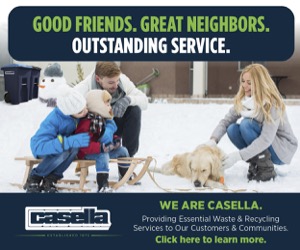By Elizabeth Sawin
Editor’s note: Elizabeth Sawin, of Hartland, is the founder and director of the Multisolving Institute, a think tank helping implement solutions that protect the climate while improving equity, health, biodiversity, economic vitality and well-being.
In the aftermath of the July floods, my home state of Vermont faces a daunting path to recovery. Flooding damaged homes and businesses. Roads and bridges were washed out, and communities were cut off from the rest of the state.
Vermont has walked this path before, after Tropical Storm Irene, and we are not alone in facing a recovery now. As the climate crisis deepens, more places will be spending more time in recovery mode.
Recovery isn’t just a difficult task. It’s also one with lasting consequences. Rebuilt infrastructure will — hopefully — stand for decades to come. Over its lifetime, it will influence climate resilience, carbon emissions, health, well-being and social equity.
Because infrastructure has such a broad influence, the process of recovery has the potential to meet multiple goals at once. A “multisolving” recovery would get a region up and running quickly while also protecting climate and biodiversity, increasing community well-being and preparing for future shocks.
Multisolving makes sense in Vermont, a land of famously frugal small farmers. If you can accomplish multiple goals for the price of one, why wouldn’t you?
But multisolving may sometimes require more time and more cooperation across silos. That may feel hard to justify in the face of urgent needs like housing people or opening bridges. If Vermont’s 2011 recovery from Irene is any guide, there will be a strong pull to the path of least resistance — reproducing our pre-storm status quo.
Urgency is justified, of course. People do need roads and bridges open to get to work, school, grocery stores and hospitals. But Vermont has already done some good multisolving in the past. We, along with communities facing recovery around the world, could do more of it.
When Irene hit, conserved wetlands protected towns along the Champlain Valley from the brunt of flooding, saving millions of dollars in potential damages. That’s climate resilience. Restoring wetlands also protects biodiversity, improves water quality and promotes recreation. With a multisolving approach, Vermonters could make restoring marshes and wetlands part of recovery.
Those of us who lived through Irene remember that long before the Federal Emergency Management Agency trucks rolled in, small businesses and community-based organizations were providing relief to Vermonters. Grocery stores became cellphone charging stations. I remember the local brewery that opened up access to its water filtration system to those who needed clean water. My local food pantry coordinated to have me and hundreds of other volunteers clean out basements and sort donations.
A similar web of mutual assistance has already sprung into action in response to the recent flooding. This is homegrown climate resilience. It’s also multisolving. This civic muscle provides benefits year-round, not just once a decade in a climate emergency. During the current recovery, we could multisolve by investing in the service organizations at the heart of our communities. We’d be boosting our capacity to respond to shocks while also increasing everyday well-being.
Vermont pioneered other multisolving solutions in the aftermath of Irene. One innovation was the “Irene Cottage.” That was a rollout of energy-efficient housing on high ground to replace less efficient housing destroyed in the flooding. Irene Cottages combined recovery, climate resilience and climate protection into one package.
A multisolving recovery in Vermont could go further. It could upsize culverts for added climate resilience. Rebuilt bridges could include lanes for pedestrians and cyclists, aligning with Vermont’s Climate Action Plan, which calls for more walking and cycling.
We can also look beyond Vermont for examples of what a multisolving recovery might look like.
After a devastating tornado in 2007, the town of Greensburg, Kansas, rallied around a vision of a green recovery. Today Greensburg is powered by renewable energy. It has an energy-efficient school, library, medical center and city hall. It saves money on fuel and electricity. Greensburg shows that the need to recover can be a chance to rethink our approach as well.
The specifics of a multisolving recovery will look different in every place. In a coastal area, it might include living shorelines. In a city, it might involve increasing the tree canopy or making homes more energy efficient.
Whatever the specifics, a multisolving recovery would ensure that every dollar and every hour of investment serves more than one goal. It would design for the future that’s coming, not the past we once knew. It would expand the idea of recovery to include nature and community, as well as bridges and roads.
Time is short, and the urgency is real. How can we seize the multisolving opportunity while still moving quickly? That’s something we will need to learn in the coming years. But there are prototypes we can learn from.
Vermont’s Irene recovery created silo-crossing networks that still exist or could be revived. For instance, Irene Cottages grew out of a partnership among a foundation, a housing group and a network of social service organizations.
After Irene, Vermont’s governor appointed an Irene recovery officer. In this flooding recovery, a similar position could be charged with aligning recovery with the state’s climate action plan, as well as our goals for nature and community well-being. The effort could take lessons from other examples of governing with a multisolving lens, like Massachusetts’ new office of climate chief or the Biden administration’s Justice40 Initiative.
There are as many ways to multisolve as there are places to try it. The point isn’t perfection. It’s to set out to recover quickly but mindfully, capturing as many co-benefits as possible along the way.




